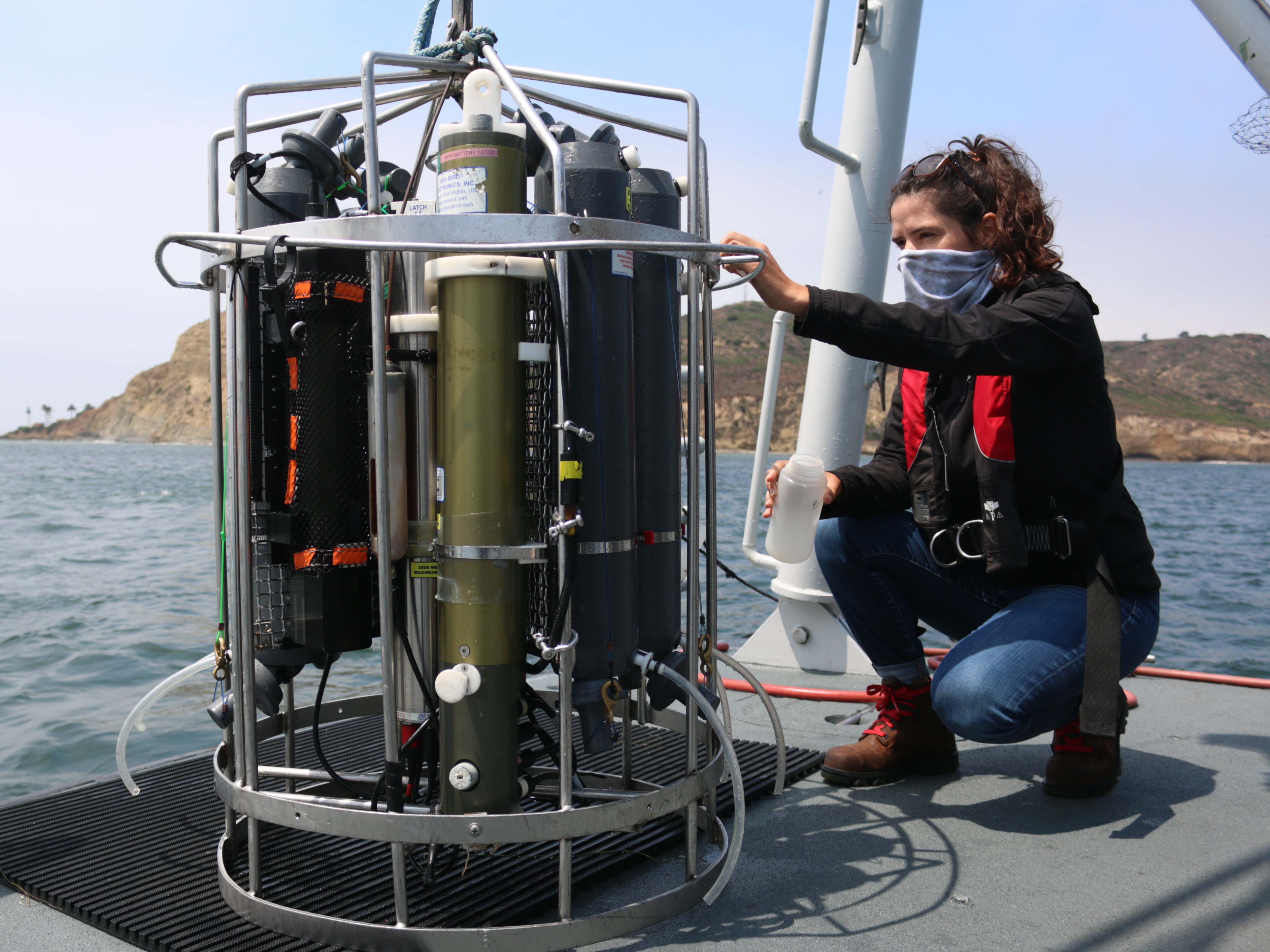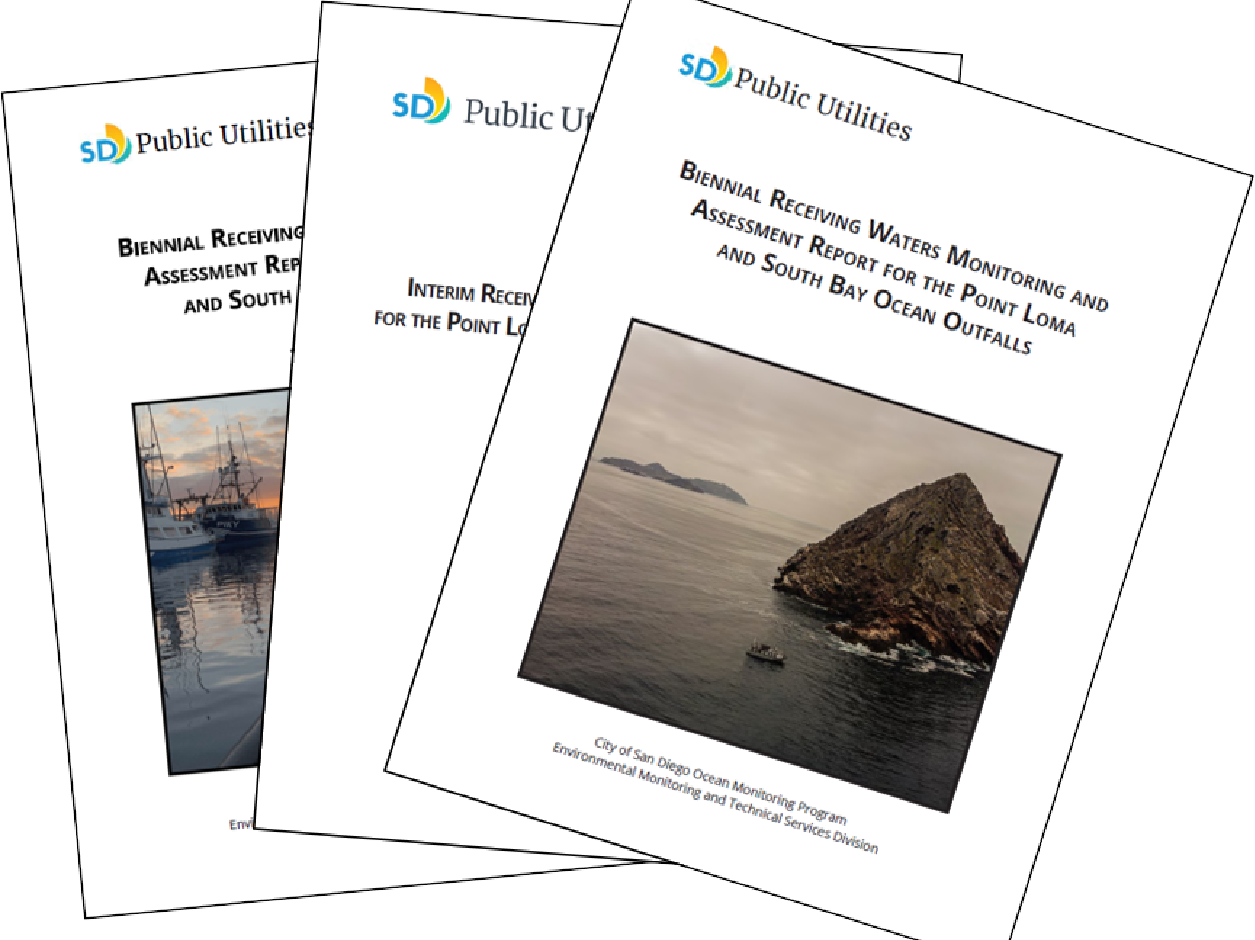What’s Sampled
The Ocean Monitoring Program covers a wide range of data collection efforts, including assessing water quality, sediment quality, community structure and health, and the tracking of wastewater plumes. We use various field and laboratory methods and instrumentation to help us collect these data, which are explained in the videos linked below.
Benthics
The “benthic zone,” which refers to the region of water and sediment/sand on the ocean floor, is sampled using an instrument known as a Van Veen grab. This claw-like instrument “grabs” sediment from the bottom, and once collected, we reserve samples for chemical, toxicological and biological analyses. To obtain biological samples, grab contents are rinsed and filtered through a sieve to extract smaller animals that live in the sediments. These samples are then preserved in preparation for identification by our taxonomists.
Taxonomy
Taxonomy is the science of describing, identifying, naming, and classifying organisms. The program has taxonomists who examine, identify and count marine invertebrates (animals without bones) collected and preserved in our benthic grab samples. These sand and mud-dwelling animals, such as clams, crustaceans, brittle stars, and worms, are important indicators of environmental health since they are one of the bases of the ocean food web, and their populations are critical to supporting a healthy ecosystem.
Trawls
Our program conducts community surveys using an otter trawl net twice a year and a combination of trawling and rig fishing once a year to collect fish tissue samples. Community surveys allow us to monitor the fish and invertebrate populations, and fish tissue samples are analyzed to determine whether commercially important fish are accumulating chemicals in their tissues. These surveys help us monitor these communities and factors that may impact their populations over space and time.
Water Quality
The physical dynamics and chemical makeup of seawater can tell scientists a lot about what is going on in the ocean. To monitor these dynamics along the San Diego coast, we use an instrument known as a “CTD” to collect water samples and record conductivity, temperature and depth data as we send it down through the water column. Once collected, water samples are analyzed by the program's microbiologists. This data is used to ensure the coastal ocean waters are healthy and meet water quality standards.




